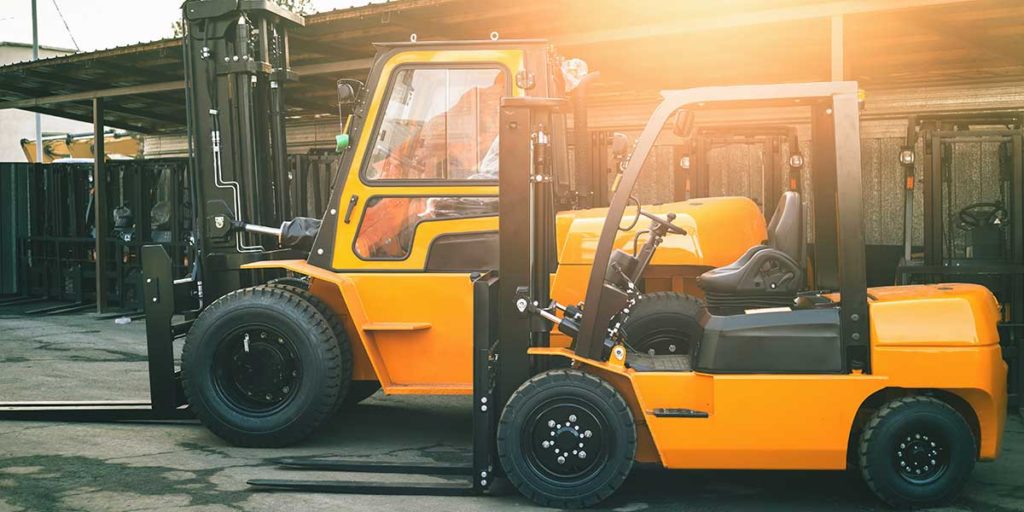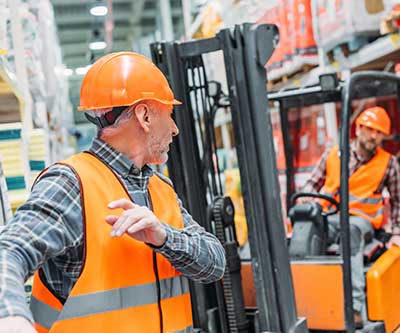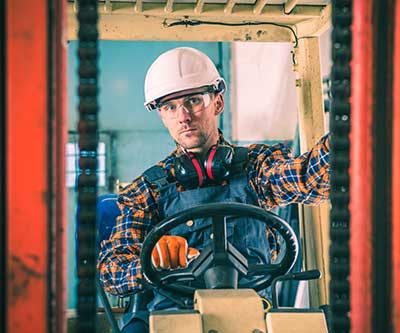Forklift safety
Posted: Jul. 15, 2019 • By Kevin Kohler

What are forklifts?
We probably all would recognize a forklift when we see one but some other names are commonly used. Forklifts are powered industrial trucks used to lift and move materials within buildings, yards or worksites. They commonly have a mast in the front that is used to raise and lower the load on two “forks”. Some other common names for forklifts include forklift truck and fork truck.
Why do we hear so much about forklift safety?
Forklifts are, unfortunately, involved in many serious accidents. By way of example one province, Alberta, recorded 219 injuries and 116 lost-time claims due to forklift accidents in 2010 alone, according to the Employment Minister when announcing an inspection blitz.
In Ontario the Ministry of Labour has this to say about forklifts:
Two facts about powered lift trucks have made them a priority for the Ontario Ministry of Labour: their use in thousands of workplaces and their continuing role as a significant cause of serious worker injury and death. A Ministry study, Hazards of Powered Lift Truck Operations in Ontario Workplaces 1990-1995, provides a graphic picture. Between 1990 and 1995, powered lift trucks were involved in 136 critical injuries, affecting 143 persons and resulting in 18 worker deaths. A common feature of many of these incidents was a failure to comply with the Occupational Health and Safety Act (OHSA) and its regulations.

When we add in the numerous near miss and property damage incidents it’s easy to see that the chance of any one of your forklifts being involved in an incident over the course of a year is very high.
The Canadian Center for Occupational Health and Safety (CCOHS) warns us that when forklift injuries occur, they’re usually serious given their tremendous weight and power.
When can forklifts be dangerous?
Forklifts accidents may occur because:
- They operate alongside other workers in constrained or high traffic locations;
- They are very heavy yet can turn in a small radius;
- They can tip over if the load is raised while traveling;
- The operator may be in an open cab;
- Load are improperly placed or secured;
- Inadequate training;
- Inadequate maintenance standards;
- They are traveling too fast for the conditions;
- Their stability can be easily exceeded;
- Safety devices were defeated, not operating or not installed.
What can we do to make forklift operation safe?
Most jurisdictions have some common requirements for forklift safety. Where these specific requirements don’t appear in the legislation they should be considered as a reasonable “duty of care” requirement. These requirements include:

- Mandatory equipment specific training that includes classroom, practical operation and on-the-job verification before permitting workers to operate a forklift independently;
- Preventative maintenance and pre-use inspection programs with records made available to the operator;
- Visible load charts or diagrams so that the operator does not to exceed the capabilities of the forklift;
- Audible and/or visual signals when the forklift is backing, moving or as a warning to others;
- The use of rollover protection and seatbelt restraining devices;
- Mandatory use of wheel securement and brakes when the forklift is parked;
- Use of a spotter in constrained spaces or where the operator has poor visibility;
- Clear rules on how forklifts must be operated.
Best Practices
Training and re-training on the specific forklift that an operator will be using is an essential requirement for safe operation. Safe job procedures and rules must be established and followed after hazard and risk assessments that incorporate all hazard controls.
Forklifts – let’s move materials safely
Related Articles

Safety Inspections
We’re very careful here so safety inspections are just a waste of time Not so. The cost of not performing safety inspections […]
Read Article
Modified Work Programs
Should you stay home until you can perform your job after a work injury? No, it’s quite the opposite, as […]
Read Article